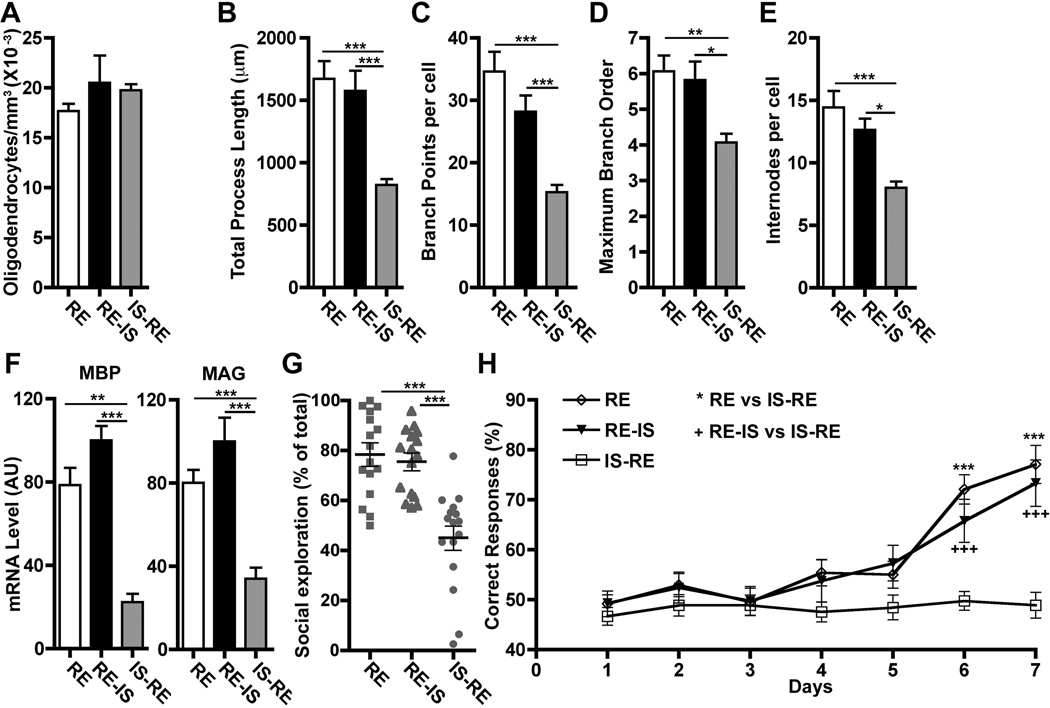Fig. 2.
The effects of social isolation on mPFC oligodendrocytes and PFC-dependent behaviors occur only during a critical period and are not reversed by reintroduction to a social environment. (A to E) mPFC oligodendrocytes show morphological alterations in mice isolated P21 to P35 and then returned to regular environment until P65 (IS-RE), but not in mice housed in regular environment until P35 and isolated thereafter (RE-IS). Early social isolation does not affect oligodendrocyte density (n = 3 mice per group), but does alter morphology (cells per group: RE = 16, RE-IS = 11, IS-RE = 14). (F) IS-RE mice showed reductions in mPFC MBP and MAG expression (n = 8 mice per group) and alterations in (G) sociability and (H) working memory (n = 16 mice per group). *P < 0.05, **P < 0.01, ***P < 0.001. Error bars, SEM.

